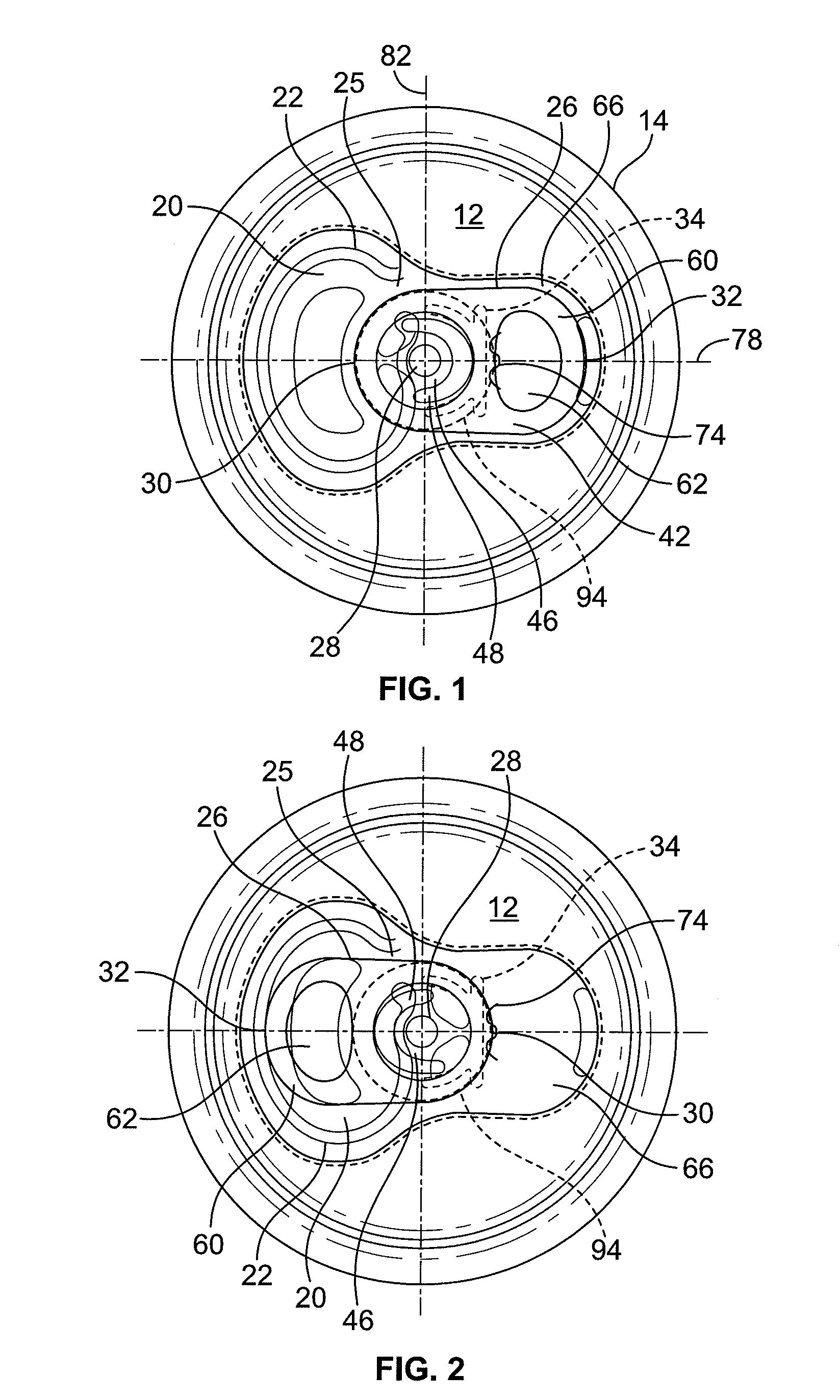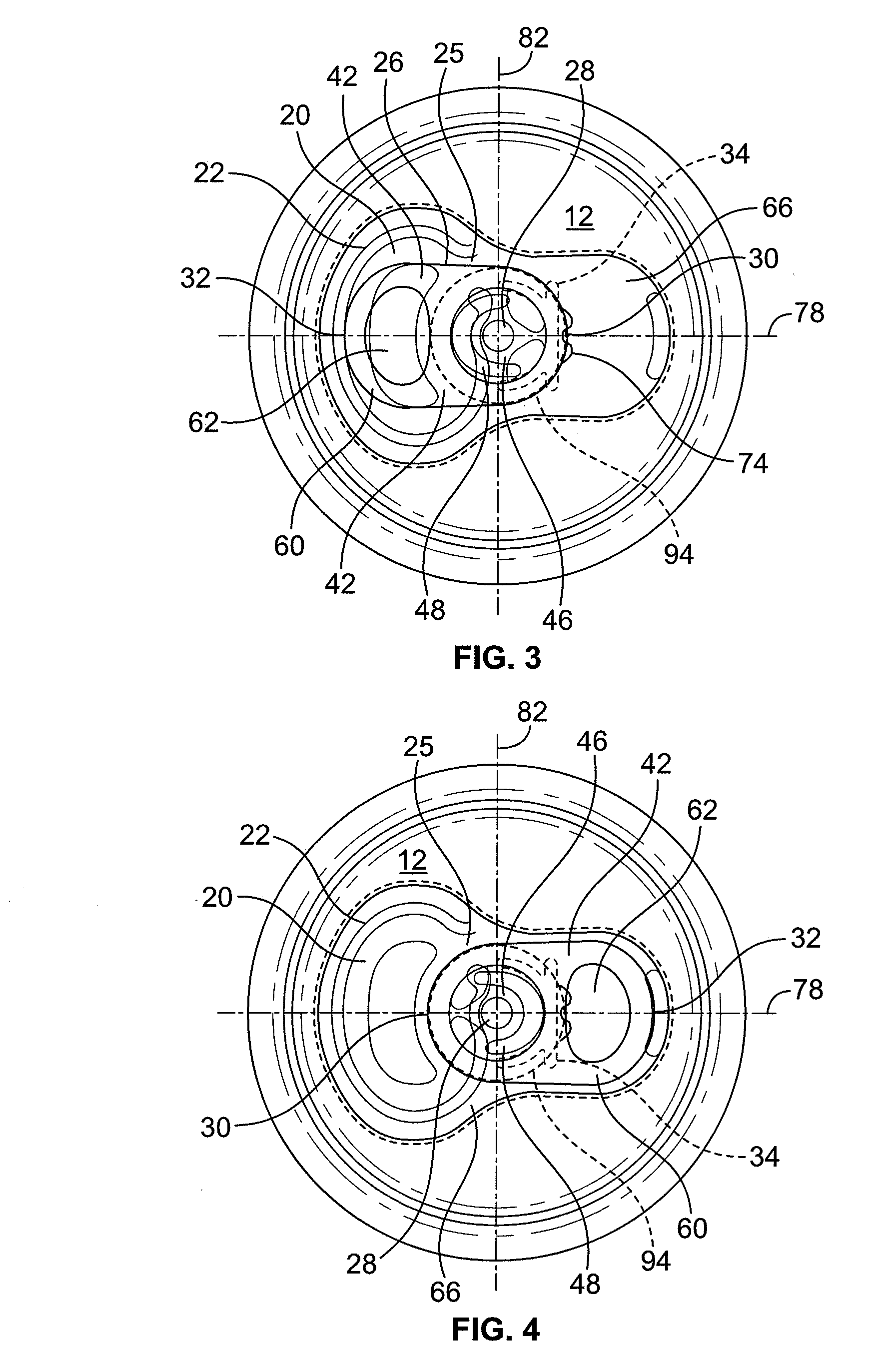Beverage Can End With Vent Port
a technology of beverage can end with a vent port and a vent port, which is applied in the direction of closures, packaging, transportation and packaging, etc., can solve the problems of not being able to completely eliminate glugging, the beverage cannot be poured from the container, and the opening can rarely be large enough to eliminate glugging
- Summary
- Abstract
- Description
- Claims
- Application Information
AI Technical Summary
Benefits of technology
Problems solved by technology
Method used
Image
Examples
Embodiment Construction
[0042]While this invention is susceptible of embodiments in many different forms, there is shown in the drawings and will herein be described in detail preferred embodiments of the invention with the understanding that the present disclosure is to be considered as an exemplification of the principles of the invention and is not intended to limit the broad aspect of the invention to the embodiments illustrated.
[0043]The present invention provides a can end aimed at providing a suitable pressure equalization port which allows a volume of fluid to enter a head space above a beverage within a beverage container. This allows the beverage to pour more smoothly and rapidly through a dispensing opening in the can end. The pressure equalization port allows the fluid to enter the head space to replace the volume of the quickly exiting liquid beverage emptied from the container through dispensing opening. The present invention is directed to a means for providing a selectively openable pressur...
PUM
 Login to View More
Login to View More Abstract
Description
Claims
Application Information
 Login to View More
Login to View More - Generate Ideas
- Intellectual Property
- Life Sciences
- Materials
- Tech Scout
- Unparalleled Data Quality
- Higher Quality Content
- 60% Fewer Hallucinations
Browse by: Latest US Patents, China's latest patents, Technical Efficacy Thesaurus, Application Domain, Technology Topic, Popular Technical Reports.
© 2025 PatSnap. All rights reserved.Legal|Privacy policy|Modern Slavery Act Transparency Statement|Sitemap|About US| Contact US: help@patsnap.com



